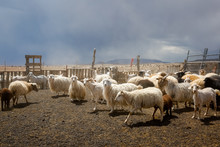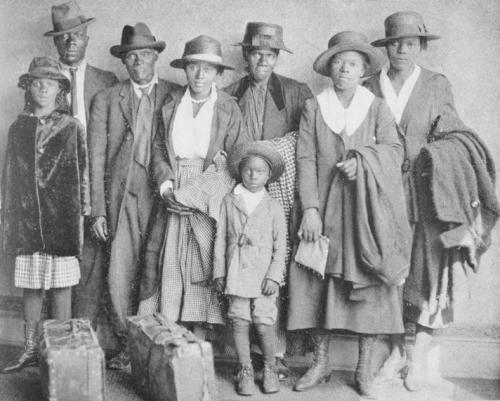
California’s War Over Water
February 13, 2021
What Happened in Tulsa
February 27, 2021If the Navajo Nation was actually a separate state, it would be larger than any of the 10 smallest states in the country.
The Native American territory stretches for 27,000 square miles in corners of Arizona, Utah and New Mexico. The territory is by far the largest Native American reservation in the United States.
About 170,000 people live on the acreage, mostly in small groups scattered across the region. Their homes are usually six-sided wood or cement structures with a smoke hole in the roof. They generally face east to catch the morning sun.
The Navajo, who call themselves Dine’, first arrived in the region between 800 and 1,000 years ago after crossing the Bering Strait into what is now Alaska and making their way southward across North America.
They self-learned how to cultivate crops and were taught by Spanish explorers how to raise livestock and horses.
The United States government began seizing their territory after winning the Mexican-American War in 1846. The U.S. Army proceeded to evict the Navajo from the land, sometimes by deadly force. Col. Kit Carson adopted a “scorched earth” policy where homes and crops were burned, eventually forcing the Navajo to surrender or starve. They were then marched off to camps, sometimes hundreds of miles away.
In 1868, a treaty was signed by tribe members and U.S. officials. It established the Navajo Indian Reservation with specific boundaries and allowed the tribe to return to their land.
A tribal government was set up in 1923 to oversee negotiations with oil companies over the exploration of the region. The Navajo governing board was reorganized in 1991 to form three branches of government with a president and vice president in the executive division.
Life has been hard for the Navajo for the past 150 years.
Today, the nation suffers from high unemployment, health issues and the environmental effects of uranium mining on their land from the 1940s through the 1980s. There are 500 abandoned mines on tribal property. The U.S. government has set aside $1 billion to clean up the environmental contamination.
The cancer rate on Navajo land continues to be a concern. In 2016, it was reported that the cancer incidence rate in the Navajo Nation was 530 per 100,000 people. That compared with 430 per 100,000 across the United States and 370 per 100,000 in Arizona.
Diabetes is also a concern due to the high obesity rate brought on by carbohydrate-rich diets.
The COVID-19 pandemic didn’t help. More than 87,000 confirmed cases had been reported as of October 2023 with more than 2,200 deaths. One of those deaths was Albert Hale, one of the nation’s first presidents. Hale died in February 2021 at age 70.
Biden administration officials declared in February 2021 that a major disaster existed in the Navajo Nation due to COVID-19. Among the factors cited was the housing shortage that forces families to congregate in large numbers as well as a lack of clean, running water. Federal funds were made available to help Navajo officials strengthen their vaccination program.
The viral outbreak also shut down trading posts and other establishments, not a good situation in an area that struggles economically in general.
The average household income in the Navajo Nation is about $8,200 a year with unemployment hovering near 50 percent. About 50 percent of tribe members live in poverty.

The raising of sheep and goats is an important segment of the Navajo Nation economy
The main sectors of the economy are the raising of sheep and goats. The Navajo also specialize in turquoise and silver jewelry as well as sand painting and pottery.
These items along with blankets and clothing made from sheep wool are sold at trading posts throughout the territory.
The tribal economy wasn’t helped by the closure in 2019 of a 2,250-megawatt power plant near Page, Arizona. The Navajo Generating Station provided hundreds of jobs to tribe members as well as $40 million in annual revenue.
However, the Navajo Nation is trying to expand its economy, especially as it weans itself off coal as a fuel source.
The territory’s first solar energy facility opened in 2017, providing electricity for 13,000 homes. Tribe leaders have also signed leases for two more solar plants that will generate a total of 270 megawatts of power.
There also continues to be an environmental clean-up on the nation’s land of the contamination left behind by more than 500 abandoned uranium mines. In mid-February 2021, the Environmental Protection Agency awarded three contracts worth $220 million to clean up more than 50 of those mines.
The tribal nation does have its place in World War Two history.
The Navajo Code Talkers helped the U.S. military in its battle with Japan. More than 400 tribe members quickly encoded, transmitted and then decoded military messages in their native language. The program allowed the military to communicate in a code the Japanese never broke. The messages were crucial in U.S. victories in the Pacific theater, including the battles of Iwo Jima and Guadalcanal.
The code talkers were honored in a Pentagon ceremony in 1992. There’s also a Navajo Code Talkers Museum near Window Rock, Arizona.
A high school basketball team in the Navajo Nation was also spotlighted in a Netflix documentary.
The 2019 film “Basketball or Nothing” featured the Chinle High School varsity squad. It followed the team from Chinle, Arizona, during its 2017-2018 season.


